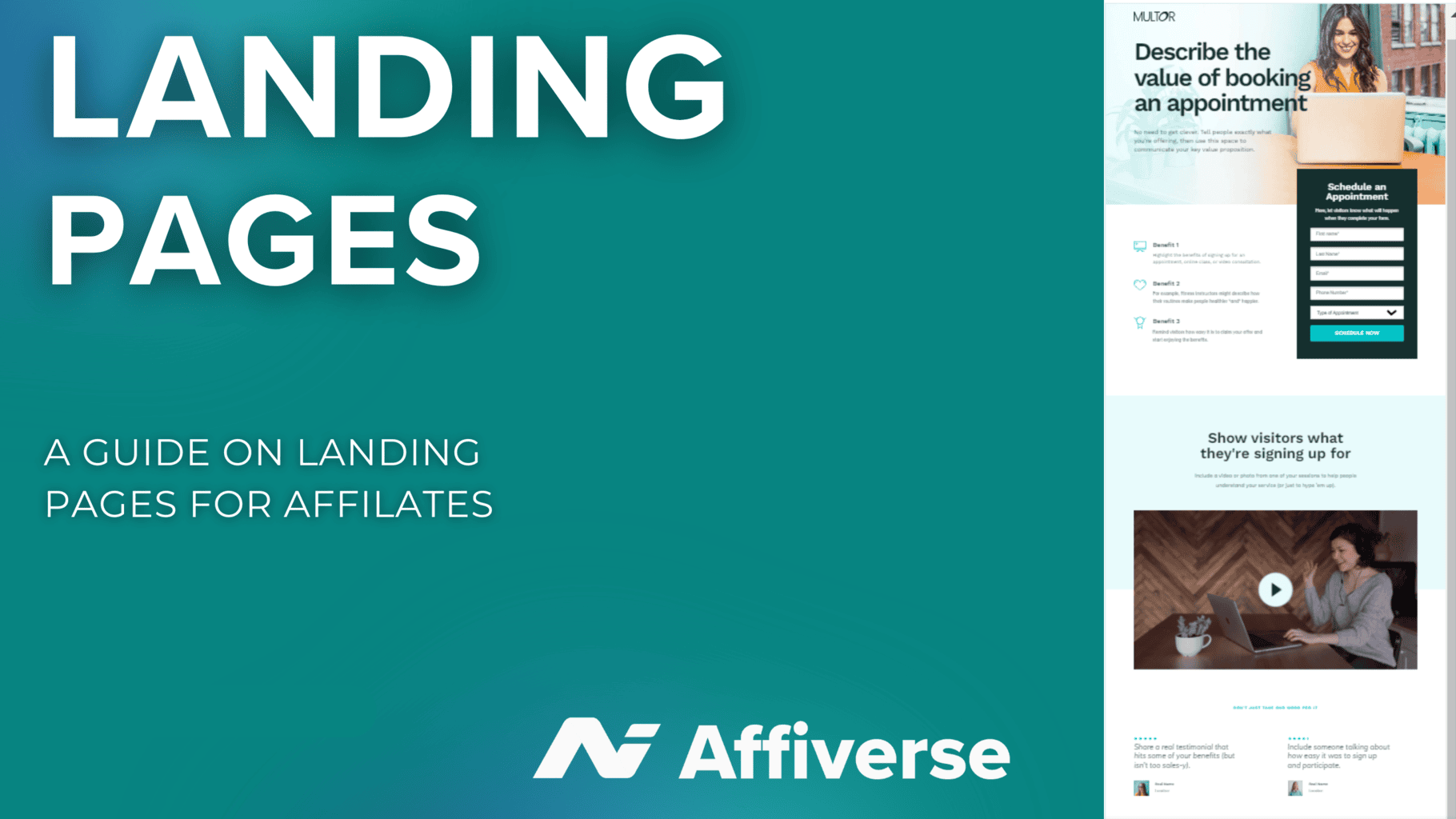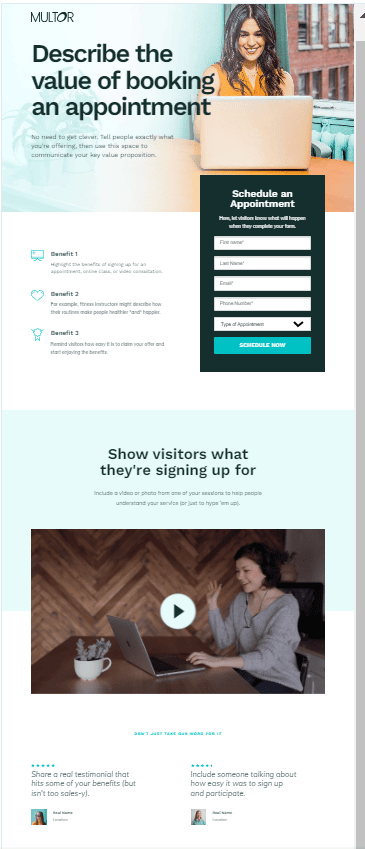What is a Landing Page in Affiliate Marketing?

A landing page in affiliate marketing is a standalone web page designed to promote a specific product or service, aiming to convert visitors into leads or customers. It’s where visitors “land” after clicking an affiliate link, with content tailored to drive specific actions like making a purchase or signing up for a newsletter. See our guide on Landing Pages vs Websites.
Why Create Affiliate Marketing Landing Pages?
Although most affiliates prefer to have full blown websites, there are some real benefits to having or creating landing pages. there are also multiple reasons as to why you may have to create a landing page:
Creating a “funnel” page. Funnel pages have most of their navigation stripped out in order to drive the visitor go down a specific route.
Externally Hosted Landing Page. Some platforms are specifically built to create landing pages. Integrating these into your main site may be more trouble than its worth, and as such you may simply market the externally hosted landing page as is.
Time Limited Offers. If you have a specific time limited offer, you may not want this to be part of your core website. In this instance a landing page might be a better route to take.
Partnership Pages. Some brands may want to offer a partnership and may offer a co-branded landing page. You would want to keep the traffic to such pages isolated to the page to improve performance.
Testing and Iteration. Landing pages are a great way to test a final design of a page, and allow you to iterate on them before you create your final website.
Benefits Of Landing Pages
Apart from the reasons highlighted above, landing pages in affiliate marketing offer some concrete benefits:
- Higher Conversion Rates: Focused and relevant content increases the likelihood of conversions.
- Targeted Campaigns: Tailor messages for specific audience segments.
- Analytics: Easier to track and measure performance.
How to Create a Landing Page for Affiliate Marketing
There are many ways to craft a landing page. The simplest way to do so would be to follow a step by step process, beginning with picking the right platform, picking your goal and developing the right content.
- Choose a Platform: Select a landing page builder (e.g., Unbounce, Leadpages, ClickFunnels).
- Define Your Goal: Determine the primary objective (e.g., sign-ups, sales).
- Create Compelling Content: Craft persuasive headlines, engaging copy, and strong calls-to-action (CTAs).
- Design and Layout: Use clean, visually appealing designs with a clear structure.
- Optimize for SEO: Include relevant keywords to improve search engine ranking.
- Test and Refine: Use A/B testing to optimize elements like headlines, images, and CTAs.

Example of an Unbounce Landing Page Template
Key Features of a Successful Landing Page
Although there isn’t a specific formula that applies to all types of landing pages, the below are the most common things to consider when building a landing page that would have the highest chance of converting.
- Clear and Compelling Headline: Captures attention immediately.
- Engaging Copy: Persuasive and relevant content that highlights benefits.
- Strong CTA: Clear and prominent calls-to-action.
- Visual Elements: High-quality images or videos to enhance engagement.
- Social Proof: Testimonials, reviews, or trust badges to build credibility.
- Mobile Optimization: Ensures the page is accessible and functional on all devices.
- Fast Load Times: Improves user experience and reduces bounce rates.
- Minimal Distractions: Focused content without unnecessary links or navigation.
What Platforms Can Be Used to Create Landing Pages?
Apart from hand coding a landing page, there have over the years been several developments in the field, and many companies now specialize in landing page building software. These platforms have used years of experience to create a series of templates and formatting used to improve conversion. Here are a few we suggest you try out.
- Unbounce: Offers customizable templates and A/B testing.
- Leadpages: Known for its ease of use and integration options.
- ClickFunnels: Great for creating sales funnels with landing pages.
- Instapage: Provides advanced analytics and personalization.
- WordPress with Page Builders: Tools like Elementor or Thrive Architect.
How to Market the Landing Page
Marketing co-branded landing pages effectively involves a multi-faceted approach that includes clear communication, targeted outreach, and continuous optimization. Here are key strategies to market co-branded landing pages successfully:
- Paid Advertising: Use platforms like Google Ads, Facebook Ads, and Instagram Ads to drive targeted traffic.
- SEO: Optimize for search engines to attract organic traffic.
- Social Media: Promote on social media channels to reach a broader audience.
- Email Marketing: Send the landing page link to your email list.
- Content Marketing: Include the landing page link in relevant blog posts and articles.
- Influencer Marketing: Partner with influencers to promote the landing page to their audience.
By understanding the purpose and creation process of landing pages, affiliate marketers can effectively enhance their campaigns, drive higher conversions, and maximize their marketing efforts.






